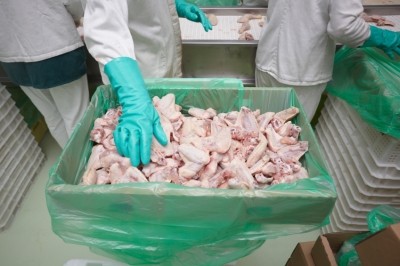Finland poultry system strong but could improve - FVO

Effectiveness is weakened by the difficulties of the competent authorities in following up and taking appropriate measures when audits detect problems, said FVO after an audit in March this year.
Other issues centred on insufficient supervision and control of food additives and labelling of MSM and shortcomings detected by the FVO not previously noted during official controls.
The audit team was told that 103,544 tonnes of chicken meat and edible offal of chicken and 7,400 tonnes of turkey meat and edible offal of turkey were produced in Finland in 2013.
There have been no RASFF notifications for Finish poultry meat and products since the beginning of 2008.
Hygiene of operations
FVO found in one site the work layout could not ensure against cross contamination (incoming unpackaged meat was transported through the place of storage of final product, a cutting room used as a passage for incoming packaged meat).
Excessive splashing of water on the slaughter line close to exposed meat, chemicals, wrapping materials, spices and food additives stored together and in close proximity and liquid mixes of spices stored despite best before dates having expired were also found.
In terms of maintenance, the audit found an example in the slicing room of final RTE product of damaged and rusty equipment in close proximity to exposed product and in contact with wrapping material of this product.
A poultry audit in 2009 as part of a general audit found there was a satisfactory control system but there were some sanitary shortcomings at establishment level, deficiencies on performance of post-mortem inspection in slaughterhouses and problems on follow up actions in cases of deficiencies.
HACCP controls
In meat processing plants visited critical control points (CCPs) such as heat treatment points, use of nitrites in meat products, smoking process and contamination with Polycyclic Aromatic Hydrocarbons and storage temperatures of final products were adequately monitored, said FVO.
However, the audit team saw some operational deficiencies relevant to HACCP systems that had not been previously detected by the official veterinarians.
“In one cutting plant the temperature of chilled meat monitored by the FBO as a CCP in its HACCP plan was repeatedly and frequently above the limit of 4ºC. As a corrective action the addition of ice was always used. No deeper analysis was carried out to address this problem.
“The temperature of meat was not monitored during production in one establishment with cutting and meat preparations production. This element was not included in establishment’s HACCP system.”
FVO said all sites had a comprehensive sampling plan and analyses were carried out mostly in compliance. But non-conformities were also observed.
In one site, according to own-check sampling records, one sample was taken instead of the five required when final products (fresh cut meat and MSM) were sampled for Salmonella. This non-conformity did not trigger any official reaction.
“In one establishment with MSM production, despite the fact that unsatisfactory results on process hygiene microbiological criteria were observed for long time, adequate corrective actions had not been taken by neither the FBO nor the CA and the problem still exists,” said the FVO.

























